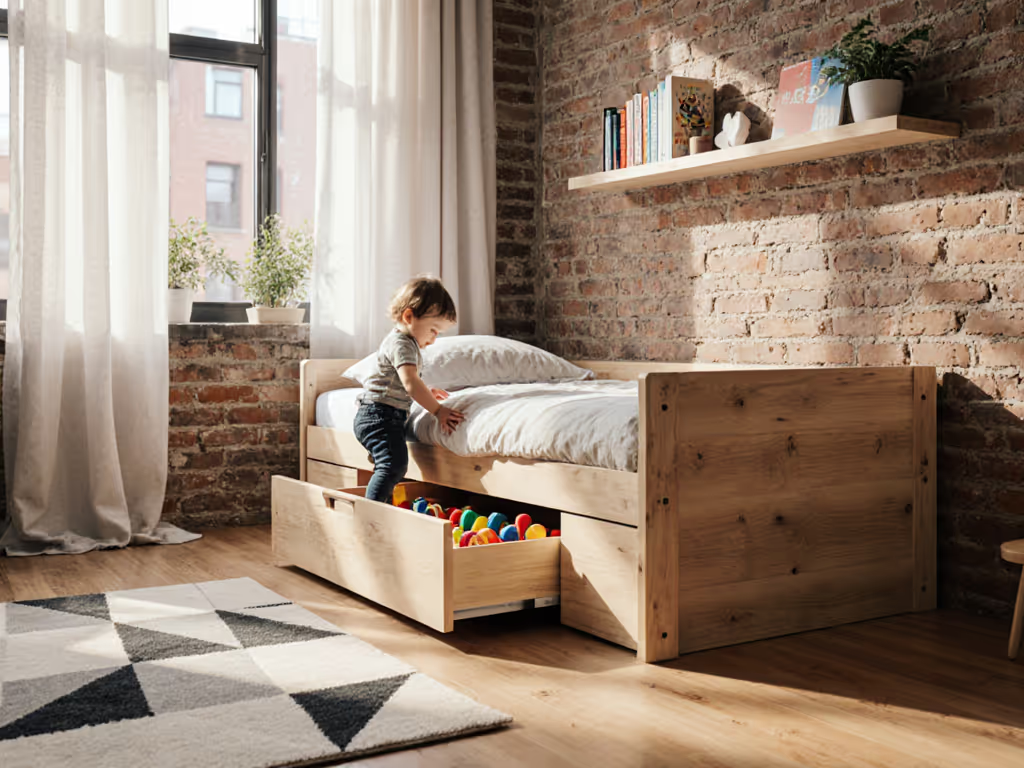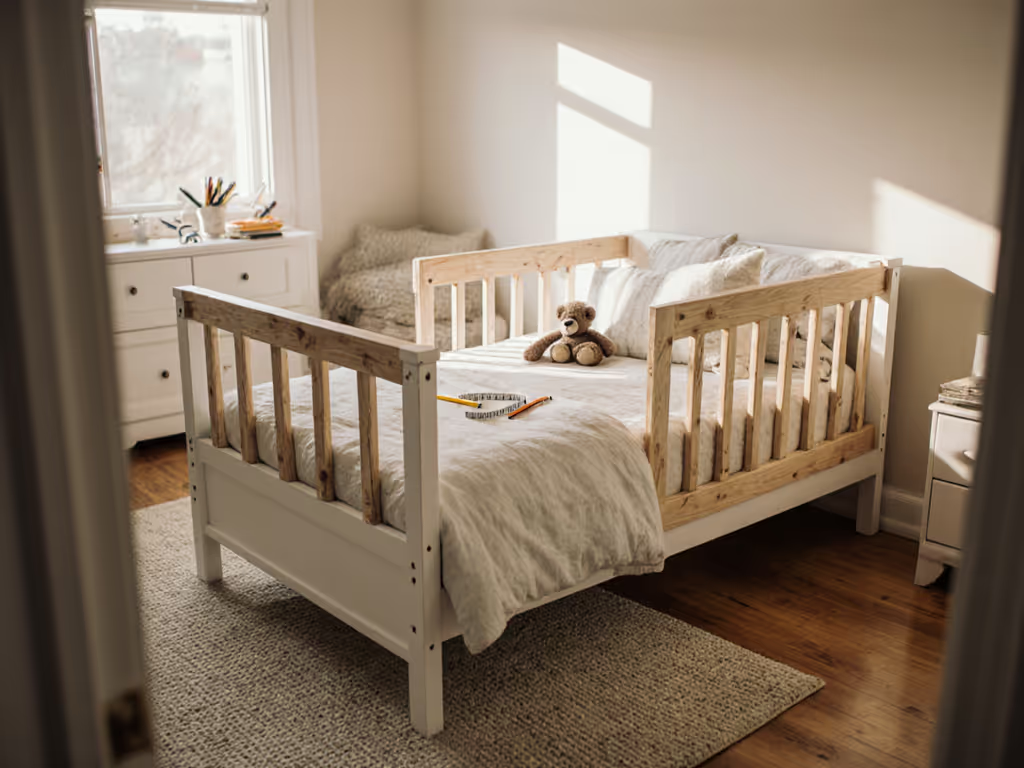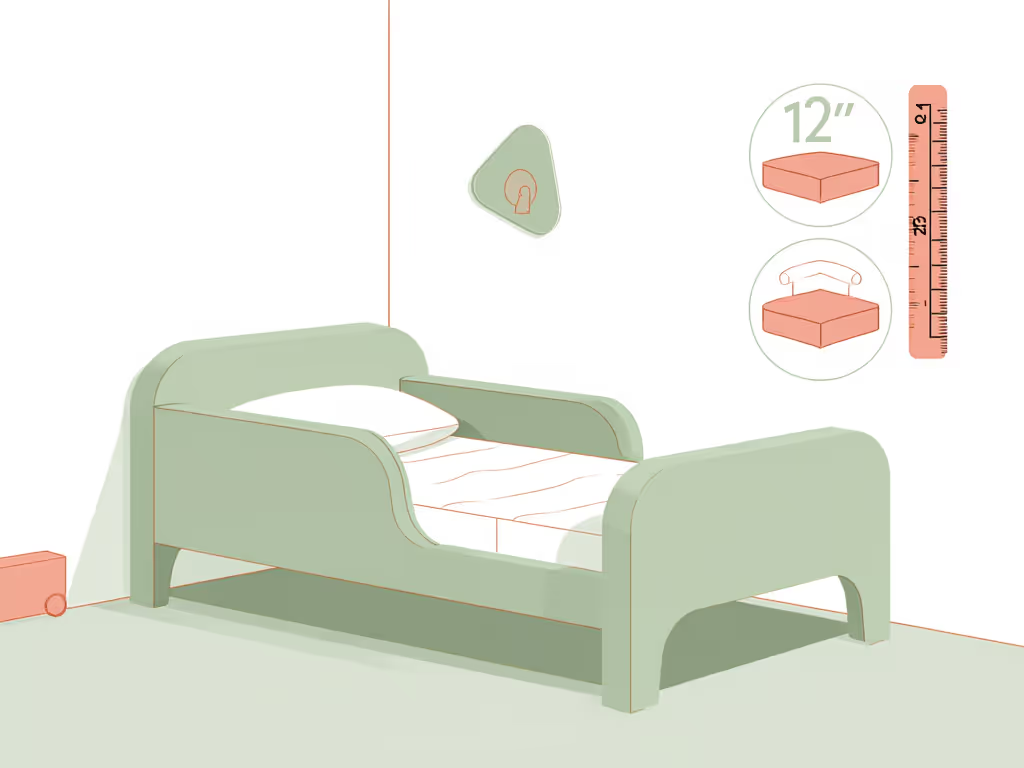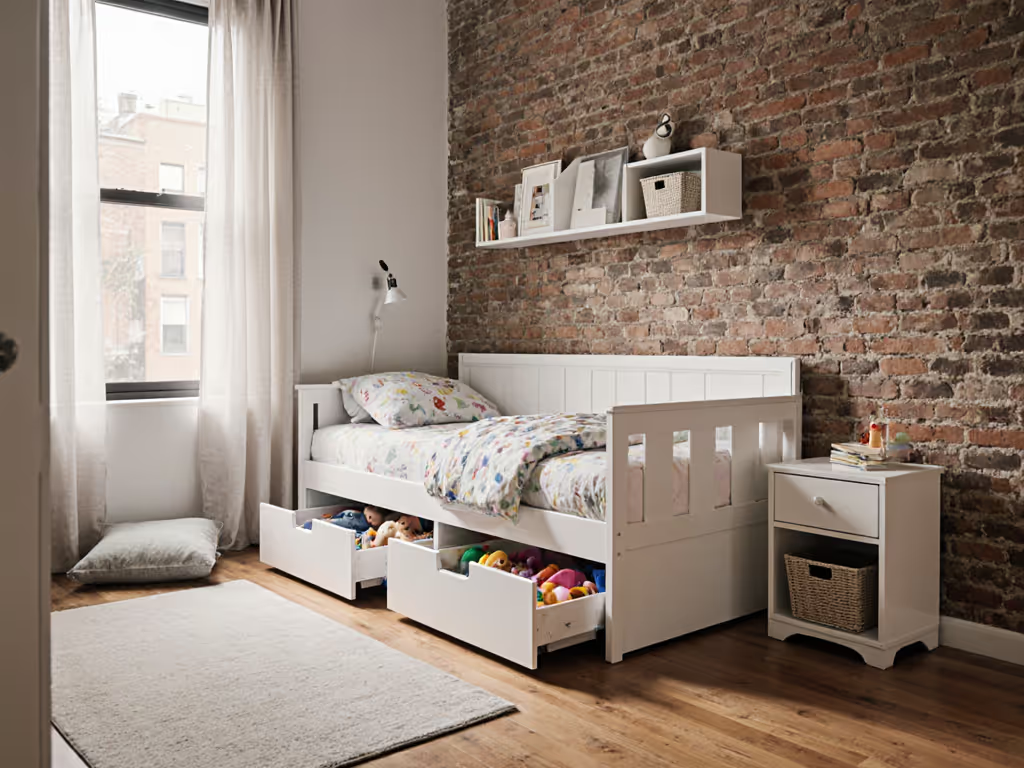If you're considering a DIY toddler bed to solve space constraints in your compact home, you're not alone. But before you attempt to convert furniture to toddler bed status, let's examine where most well-intentioned parents inadvertently compromise safety. I've seen countless "creative" conversions that fail basic stability tests, like a guest's high rail that became a dangerous lever when her toddler tried to vault it during a playdate. Boring and low beats pretty and risky every time.
As a parent and product safety researcher focused on low-profile toddler beds, I've spent years examining how seemingly clever DIY solutions introduce hidden hazards. This FAQ addresses the critical safety questions you should be asking before repurposing furniture for your child's sleep space.
Why most DIY toddler bed conversions fail safety basics
How can I assess if my DIY conversion design has adequate stability?
Most DIY toddler bed efforts overlook fundamental stability metrics. Before considering any conversion, run these three checks:
- Center of gravity test: Apply 15 pounds of force at the highest point. If it shifts more than 1 inch horizontally, it's unstable.
- Edge radius measurement: Any exposed edges must have at least a 0.5-inch radius to prevent injury during falls.
- Anchoring hardware verification: Furniture must include provisions for wall-anchoring to prevent tip-over.
I've tested numerous "upcycled toddler furniture" projects that pass visual inspection but fail under proper assessment. One popular dresser-to-bed conversion created a dangerously high center of gravity when the original drawers were removed. Remember, low-and-slow design is not just a suggestion, it is a safety imperative.
Risk hierarchy should always prioritize preventable falls over visual appeal or space-saving convenience.
What's the biggest misconception about DIY guardrails for toddler beds?
Many parents mistakenly believe that any raised edge qualifies as a guardrail. In reality, DIY guardrails for toddler bed conversions often create dangerous leverage points. A properly designed guardrail must:
- Be no higher than 10 inches above the mattress.
- Extend at least 12 inches beyond the sleeping area on both ends.
- Have no gaps larger than 3.5 inches between rails.
- Be rounded at the top edge (minimum 0.25-inch radius).
That Instagram-worthy repurposed headboard with vertical slats? It creates perfect toe-holds for ambitious climbers. I've watched toddlers transform "secure" barriers into launch pads in seconds. When contemplating how to repurpose a dresser as a bed, consider that raising the sleeping surface almost always creates dangerous fall heights. For deeper guidance on dimensions and placement, see our 5-inch guardrail rule safety guide.
How do I verify if materials are truly safe for toddler sleep furniture?
Don't trust "non-toxic" claims without verification. Demand specific VOC disclosure documentation from manufacturers. For DIY projects, consider these material guidelines:
- Avoid particleboard with formaldehyde-based binders (common in budget furniture).
- Test existing finishes with a white cloth dampened with rubbing alcohol, any transfer indicates potential toxin exposure.
- Opt for water-based, low-VOC finishes that have been third-party certified.
Many parents I've consulted were shocked to discover their "eco-friendly" upcycled furniture was off-gassing VOCs at levels exceeding safety standards. When building a twin trundle bed with a mattress system from existing furniture, remember that children's respiratory systems are developing and more vulnerable to airborne toxins.
Why are "free" furniture conversions often the most expensive choice?
That "free" dresser you scored might cost you in unexpected ways:
- Hidden modification costs: Proper reinforcement often requires structural changes.
- Safety retrofit expenses: Adding proper anchoring, rounding edges, and reinforcing joints.
- Mattress compatibility issues: Standard crib mattresses (27"x52") differ from twin (38"x75").
- Shortened usable life: Furniture not designed for bedding duty fails prematurely.
I've tracked numerous cases where parents spent more fixing safety issues than they would have on a purpose-built solution. Remember, your child's sleep space requires different structural considerations than storage furniture. What works for clothes storage becomes hazardous when converted to a sleeping surface without proper engineering.
Critical questions before attempting any conversion
What structural elements must NEVER be compromised in a toddler bed?
Three non-negotiables:
- Sleep surface height: Maximum 12 inches from floor to mattress top.
- Support slat spacing: Maximum 6 inches between slats (smaller children can get limbs trapped).
- Edge integrity: All corners must have a minimum 1-inch radius.
Many DIY attempts to create space-saving upcycled toddler furniture sacrifice these fundamentals. That "brilliant" idea to convert a dresser into a loft bed? It violates every safety principle. When considering how to convert furniture to toddler bed status, ask yourself: "Would this design pass CPSC testing?" If you can't confidently answer yes, reconsider.
How can I test if my DIY bed conversion meets basic safety standards?
Before your child sleeps on it:
- Stability test: Apply force equivalent to a 30-pound toddler jumping at various points.
- Edge test: Run your hand along all edges, if it feels sharp to you, it's dangerous for them.
- Gap test: Insert a toilet paper roll anywhere near the sleeping area, if it fits, a child's head could too.
- Anchoring test: Verify you can securely attach to wall studs (not just drywall).
I've documented numerous cases where parents skipped these verification steps, only to discover dangerous instability during actual use. Remember that furniture designed for storage has different weight distribution requirements than sleep surfaces. That seemingly sturdy dresser becomes top-heavy when converted to a raised sleeping platform.
When to choose purpose-built over DIY
Consider these red flags that indicate a DIY approach is too risky:
- Any design requiring you to raise the sleeping surface more than 12 inches off the floor.
- Furniture with open shelving or cubbies that could entrap limbs.
- Pieces requiring significant structural modification to function as bed frames.
- Anything lacking provisions for secure wall anchoring.
Purpose-built toddler beds undergo rigorous safety testing that DIY conversions simply cannot replicate. In my research, I've found that properly designed low-profile beds with integrated guardrails provide superior safety without sacrificing space efficiency. The most successful conversions maintain the furniture's original structural integrity while minimizing modifications to the sleeping surface itself.
For further exploration of toddler bed safety standards, I recommend reviewing the latest CPSC guidelines and connecting with certified product safety specialists who can evaluate your specific space constraints. When it comes to your child's sleep environment, safety should feel boring (and that is beautiful). Trust verified solutions over clever hacks, and always prioritize your child's wellbeing over space-saving convenience. Your peace of mind is worth the investment in properly engineered solutions that put safety first.




